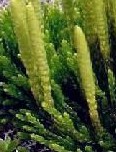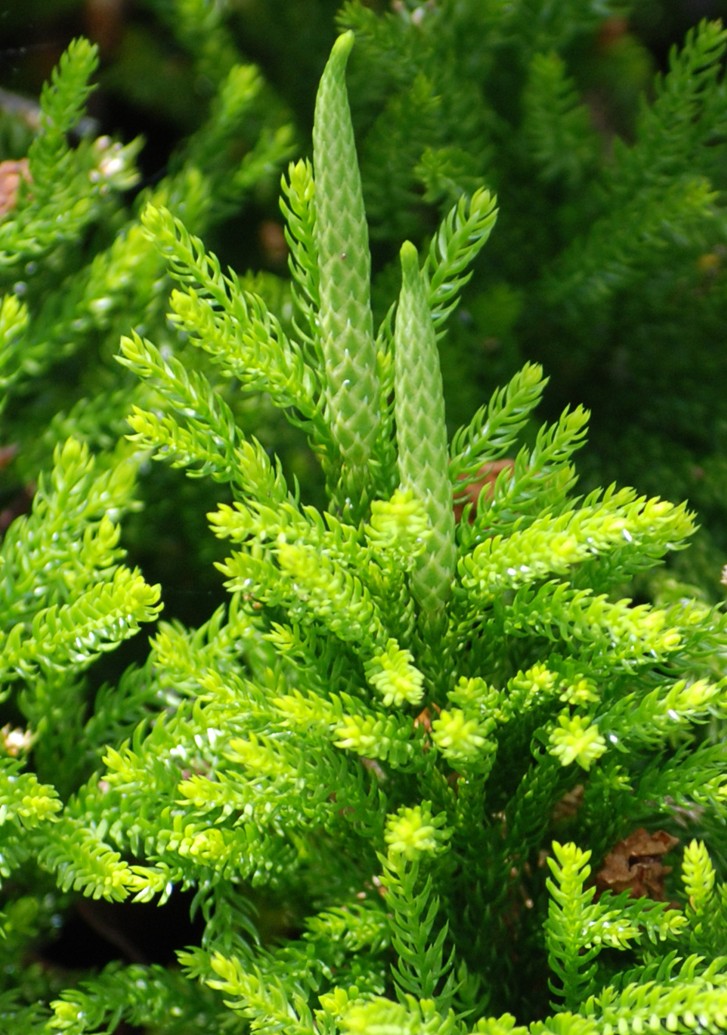 Club mosses are not true mosses and are in a different division of the plant kingdom. Unlike true mosses, club mosses have vascular tissue to absorb water and nutrients. They reproduce by spores produced in cone-like structures (strobili) shaped like clubs and do not produce flowers or seeds. They can be distinguished from other members of the Pteriodophytes by their small leaves spirally arranged around the stem. Most of the members of the club moss family have horizontal branching stems that send up erect shoots some of which produce strobili with spores. The high oil content in the spores make them anti-absorbent as well as flammable and they have been used as dusting powder and flash powder. Lycopodium dendroideum, also called ground pine, is a native of northeastern United States, and is used for Christmas greenery. Although the extant plants of the family are small, extinct species formed forests in swampy environments over 200 million years ago and significantly contributed to coal reserves. There are two genera and 450 species comprise the club moss family.
Club mosses are not true mosses and are in a different division of the plant kingdom. Unlike true mosses, club mosses have vascular tissue to absorb water and nutrients. They reproduce by spores produced in cone-like structures (strobili) shaped like clubs and do not produce flowers or seeds. They can be distinguished from other members of the Pteriodophytes by their small leaves spirally arranged around the stem. Most of the members of the club moss family have horizontal branching stems that send up erect shoots some of which produce strobili with spores. The high oil content in the spores make them anti-absorbent as well as flammable and they have been used as dusting powder and flash powder. Lycopodium dendroideum, also called ground pine, is a native of northeastern United States, and is used for Christmas greenery. Although the extant plants of the family are small, extinct species formed forests in swampy environments over 200 million years ago and significantly contributed to coal reserves. There are two genera and 450 species comprise the club moss family.

-
1. Small leaves are spirally arranged along the stem.
2. Spores produced in strobili
